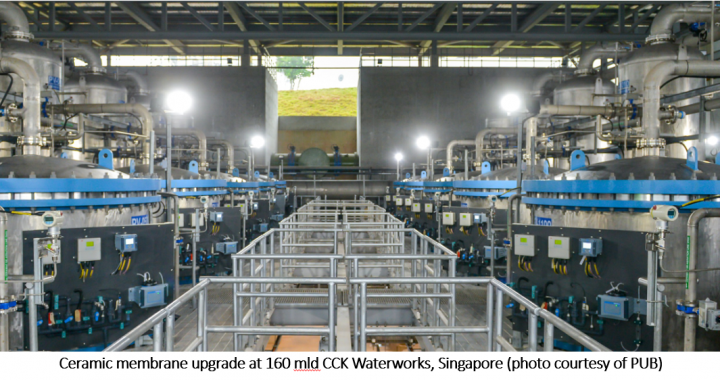Just when we all thought that the dust had settled, everything is set for change in the membrane market. In the 20 years since polymeric membranes made their dramatic entrance to the municipal market, there has been a gradual consolidation as products have matured and improved and application knowledge has advanced. Some early entrants have dropped out and the stronger offerings now dominate. A few years ago, it seemed we were heading for calmer waters as we came out of the financial crisis.
However, two major trends have stirred up the pot again. Firstly, in polymerics we now have two companies with a portfolio of products that dominate the market, namely Du Pont and Suez as noted in my post of 26th July. It used to be that each supplier was an advocate for its own product type and the market was split between a dozen or so suppliers promoting different materials and formats with little commonality and a very limited degree of interchangeability. However, first Suez and now Du Pont have changed all that by acquiring technologies and companies that used to inhabit enemy territory. Both now advocate a solution from anywhere across the spectrum of offerings including RO/NF, UF/MF as well as MBR and this has fundamentally changed the dynamics of the market.
The only piece missing from either portfolio is ceramics, and it is ceramic membranes that are looking as if they will be the next major trend. My blog two weeks ago on ceramics had a question mark in the title. Having attended the recent Singapore Water Week webinar on Ceramic Membranes this week, the case is starting to look compelling. Obviously, the ceramic suppliers were never in doubt, but I was particularly taken by the strength of the case studies presented by the end users themselves. Firstly, there were two Nanostone projects from the US, each presented in videos by the plant managers. They left no doubt that the switch to ceramics had saved hassle, reduced operating cost, increased throughput, and improved water quality. This was followed by the technology arm of PWN, who were so impressed by ceramics that they formed their own company, PWNT. Ceramics are successfully used at PWN’s works at Andijk, and a second project was also discussed in a panel session by South West Water in the UK. Last but not least is PUB’s own interest in ceramics at the CCK facility in Singapore and in current desalination pilots.
Listening to all of this positive feedback, it became clear that these end users were not just dabbling at the margins, but were probably the early adopters of the next big thing in membranes.
The company and technology developments have reinforced my decision to bring my training workshop series on-line. I have been conducting physical workshops for the last 15 years, but the lockdown this year has forced me to re-evaluate this approach. I like the physical workshops, and the interaction and intensity of the teaching and learning process is invaluable, but it now seems to be time to add another string to the bow. Virtual workshops have the obvious advantage of not having to travel for either teacher or student and can be packaged in bite size morsels.
I have joined forces in this endeavour with TechnoBiz, and we are offering three webinar series on polymerics, ceramics and MBR. There will be a total of 16 webinars, each in a 1⅟₂ hour time slot including an opportunity for Q&A. The webinars will take place from 18th January to 9th February, 2021 (see www.knowhow-webinars.com). The two ceramic webinars in these series will be held on the 3rd and 4th February. My colleague and good friend Mark Wilf will be following my series on membrane filtration with his own series of 15 webinars on RO starting on 15th February. Webinars can either be viewed in real time or accessed after the event, and students can sign up for individual webinars (since each is standalone) or as a complete or partial series for a comprehensive training experience. Hope to see you there!

